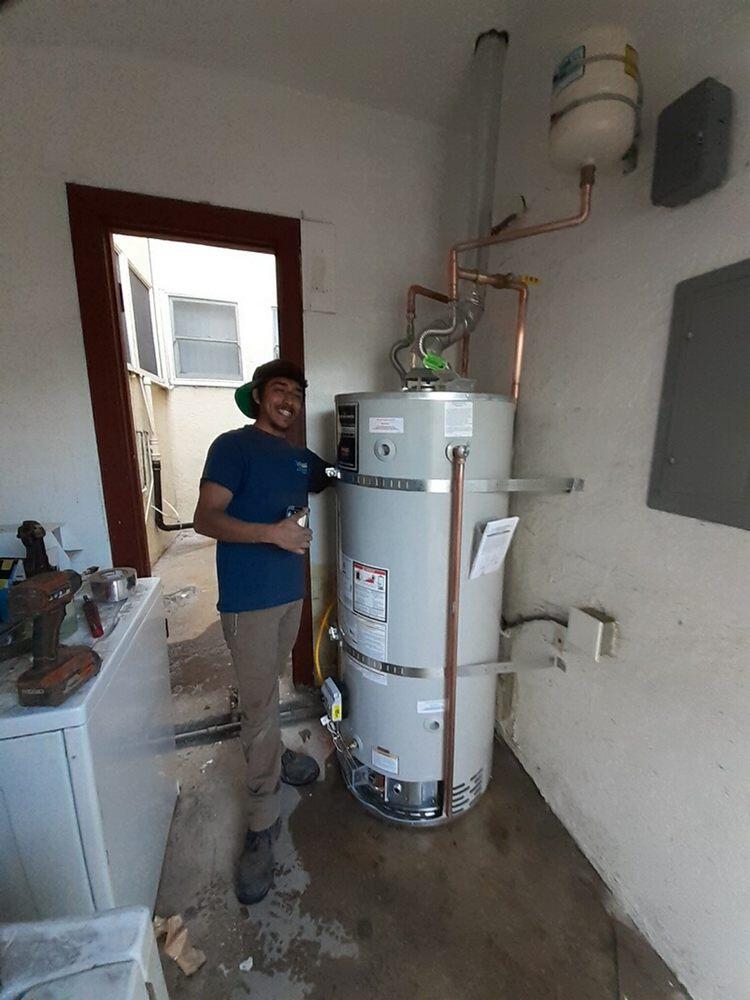Crews Continue to Work Around the Clock to Restore Water Service to Affected Customers in Granada Hills and Porter Ranch Communities – LADWP News

Report on Water Service Disruption and Response in Granada Hills and Porter Ranch
Incident Summary and Operational Status
This report details the ongoing response to a water service outage affecting the Granada Hills and Porter Ranch communities, which commenced on August 5, 2025. The disruption was caused by a critical valve failure at a pump station connected to a 10-million-gallon water tank, severing water flow from a 54-inch diameter pipe. As of 7:00 AM, August 9, 2025, Los Angeles Department of Water and Power (LADWP) crews are engaged in continuous repair and restoration operations. Key progress includes refilling the primary water tank to approximately 27% capacity. To expedite the restoration of this essential service, one additional pump has been installed, with two more scheduled for deployment. This enhanced pumping capacity will accelerate the refilling process and allow for preliminary water quality testing, a critical step toward ensuring public health and safety.
Alignment with Sustainable Development Goals (SDGs)
The response strategy is fundamentally aligned with several United Nations Sustainable Development Goals (SDGs), focusing on community well-being, infrastructure resilience, and equitable access to essential services during this critical incident.
SDG 6: Clean Water and Sanitation
Ensuring access to clean water and sanitation for all is the primary objective of the response. The outage represents a temporary challenge to this goal, and all efforts are directed at its swift restoration.
- Provision of Safe Drinking Water: Distribution of bottled water addresses the immediate need for safe, potable water for drinking and cooking.
- Sustainable Water Management: The provision of recycled water for non-potable uses, such as toilet flushing and outdoor irrigation, demonstrates responsible management of water resources and reduces the strain on the potable water supply.
- Sanitation Facilities: The deployment of mobile showers, restrooms, and laundry units ensures that residents’ sanitation and hygiene needs are met, upholding dignity and preventing health risks.
SDG 11: Sustainable Cities and Communities
This incident underscores the importance of resilient infrastructure. The continuous, around-the-clock repair work aims to restore and strengthen the water distribution system, contributing to the creation of a more resilient and sustainable urban environment. The coordinated emergency response is a direct action toward making communities safer and more resilient to system failures.
SDG 3: Good Health and Well-being
Protecting public health is a paramount concern. The issuance of a Boil Water Notice is a critical precautionary measure to prevent waterborne illnesses and safeguard community health until comprehensive water quality testing confirms the water is safe for consumption.
SDG 10: Reduced Inequalities
LADWP has implemented targeted support for vulnerable populations, including seniors and individuals with disabilities or functional needs. By providing direct assistance and delivery services to those unable to access distribution centers, the response ensures an inclusive approach, leaving no one behind.
Public Health Advisory and Conservation Mandate
A Boil Water Notice remains in effect for all affected areas. To ensure public health and safety, water must be boiled before being used for drinking, cooking, brushing teeth, or washing produce. This measure is mandated by public health standards during system repairs and depressurization.
To support the rapid pressurization and refilling of the water system, residents are directed to adhere to the following conservation measures:
- Utilize bottled water for all drinking and cooking needs.
- Ensure all indoor and outdoor water taps remain closed.
- Postpone non-essential water usage, such as laundry and dishwashing.
- Deactivate all sprinkler and smart irrigation systems.
- Turn off automatic fill systems for swimming pools.
Community Support and Resource Distribution Centers
To mitigate the impact on residents, LADWP has established five support centers providing essential services. These locations are instrumental in upholding SDG 6 by ensuring continued access to water and sanitation.
- Holleigh Bernson Memorial Park (20500 Sesnon Blvd, Porter Ranch, CA 91326): Open 7 AM – 9 PM. Services include bottled water, recycled water, restrooms, showers, and mobile laundry units.
- O’Melveny Park (17300 Sesnon Blvd., Granada Hills, CA 91344): Open 7 AM – 9 PM. Services include bottled water, recycled water, and restrooms.
- Intersection of Tampa Ave. and Sesnon Blvd: Open 7 AM – 9 PM. Services include bottled water and recycled water distribution.
- YMCA (11336 Corbin Street, Porter Ranch, CA 91326): Open 5 AM – 10 PM. Services include showers and mobile laundry units.
- Intersection of Rinaldi St. and Louise Ave: Open 5 AM – 10 PM. Services include showers, mobile laundry units, and restrooms.
Analysis of Sustainable Development Goals in the Article
1. Which SDGs are addressed or connected to the issues highlighted in the article?
The article on the water outage in Granada Hills and Porter Ranch addresses several Sustainable Development Goals (SDGs) through its discussion of the infrastructure failure, the emergency response, and the impact on the community. The following SDGs are relevant:
- SDG 6: Clean Water and Sanitation: This is the most central SDG, as the article’s entire focus is on a disruption to the clean water supply and the efforts to restore it safely.
- SDG 3: Good Health and Well-being: The article connects to this goal through its emphasis on public health and safety, specifically the measures taken to prevent waterborne illnesses.
- SDG 11: Sustainable Cities and Communities: The incident highlights the importance of resilient infrastructure and effective crisis management within urban communities.
- SDG 10: Reduced Inequalities: The response plan shows a clear consideration for vulnerable populations, which directly aligns with the goal of ensuring inclusion and support for all community members.
2. What specific targets under those SDGs can be identified based on the article’s content?
Based on the details provided in the article, several specific SDG targets can be identified:
- Under SDG 6 (Clean Water and Sanitation):
- Target 6.1: “By 2030, achieve universal and equitable access to safe and affordable drinking water for all.” The article describes a failure to meet this target due to a “broken valve” that “cut off” water flow. The entire response, from repairing the valve to distributing bottled water, is an effort to restore this access. The issuance of a “Boil Water Notice” directly addresses the “safe” drinking water aspect.
- Target 6.4: “By 2030, substantially increase water-use efficiency across all sectors…” The article explicitly calls for water conservation measures to aid in the restoration process, asking residents to “keep taps turned off,” “TURN OFF all sprinklers,” and “TURN OFF swimming pool automatic fill systems.”
- Target 6.b: “Support and strengthen the participation of local communities in improving water and sanitation management.” LADWP’s public updates, clear instructions for residents, and appeals for cooperation (“Your cooperation makes a big difference”) are forms of engaging the local community in managing the water crisis.
- Under SDG 3 (Good Health and Well-being):
- Target 3.9: “By 2030, substantially reduce the number of deaths and illnesses from… water… pollution and contamination.” The “Boil Water Notice” is a direct preventative measure against illnesses from potentially contaminated water. Furthermore, the plan to conduct a “comprehensive testing process to ensure the water meets safety standards” before lifting the notice is a direct action toward this target.
- Under SDG 11 (Sustainable Cities and Communities):
- Target 11.5: “By 2030, significantly reduce the number of people affected… by disasters, including water-related disasters…” The water outage is a localized, water-related disaster. The response by LADWP, including setting up support centers and working “around the clock,” is aimed at mitigating the impact on the affected population in “Granada Hills and Porter Ranch.”
- Under SDG 10 (Reduced Inequalities):
- Target 10.2: “By 2030, empower and promote the social, economic and political inclusion of all, irrespective of age, sex, disability…” The article demonstrates this by stating, “LADWP continues to provide support to vulnerable customers, including seniors and customers with disabilities and functional needs,” and by providing specific TTY contact information for individuals who are “Deaf, hard of hearing, or have a speech disability.”
3. Are there any indicators mentioned or implied in the article that can be used to measure progress towards the identified targets?
The article mentions or implies several indicators that can be used to measure progress and outcomes related to the identified targets:
- For Target 6.1 (Access to Safe Water): The primary indicator is the status of the water supply. The article notes the “10-million-gallon tank… has reached approximately 27% capacity,” which is a quantifiable measure of progress in restoring the water system. The lifting of the “Boil Water Notice” following successful “water quality testing” would serve as the final indicator that access to *safe* water has been restored.
- For Target 3.9 (Preventing Illness): The issuance and enforcement of the “Boil Water Notice” is an indicator of action taken. The results of the “comprehensive testing process” serve as a direct indicator of water safety, measuring whether the water meets public health standards.
- For Target 11.5 (Disaster Impact): The number of support services provided is a key indicator. The article lists “five area locations” offering services like “bottled water distribution, recycled water distribution, restrooms, showers, and mobile laundry units.” The number of people using these services could be tracked to measure the scale of the response. The “interactive map” helps define the affected population, which is another indicator.
- For Target 10.2 (Reduced Inequalities): An indicator is the existence of specialized support mechanisms. The article points to the dedicated phone line for vulnerable customers to “request to speak to a customer service representative” for assistance and the provision of a TTY number (“1-800-HEAR-DWP”) as concrete indicators of inclusive service delivery.
4. Summary Table of SDGs, Targets, and Indicators
| SDGs | Targets | Indicators Identified in the Article |
|---|---|---|
| SDG 6: Clean Water and Sanitation |
6.1: Achieve universal and equitable access to safe and affordable drinking water.
6.4: Increase water-use efficiency. 6.b: Support local community participation in water management. |
– Percentage of water tank capacity restored (currently at “27% capacity”). – Status of the “Boil Water Notice” (issued/lifted). – Implementation of water conservation requests (e.g., turning off sprinklers, taps). – Public communication and updates to the community (“Granada Hills/Porter Ranch Water Incident Update #9”). |
| SDG 3: Good Health and Well-being | 3.9: Reduce illnesses from water contamination. |
– Issuance of a “Boil Water Notice” to prevent illness. – Execution of a “comprehensive testing process” to ensure water meets safety standards. |
| SDG 11: Sustainable Cities and Communities | 11.5: Reduce the number of people affected by water-related disasters. |
– Number of support centers established (“five area locations”). – Range of services provided (bottled water, showers, laundry facilities). – Definition of the affected population via an “interactive map.” |
| SDG 10: Reduced Inequalities | 10.2: Promote the inclusion of all, irrespective of age or disability. |
– Provision of direct support to “vulnerable customers, including seniors and customers with disabilities.” – Availability of a TTY phone line for the Deaf and hard of hearing. |
Source: ladwpnews.com

What is Your Reaction?
 Like
0
Like
0
 Dislike
0
Dislike
0
 Love
0
Love
0
 Funny
0
Funny
0
 Angry
0
Angry
0
 Sad
0
Sad
0
 Wow
0
Wow
0































_1.png?#)



































;Resize=805#)









